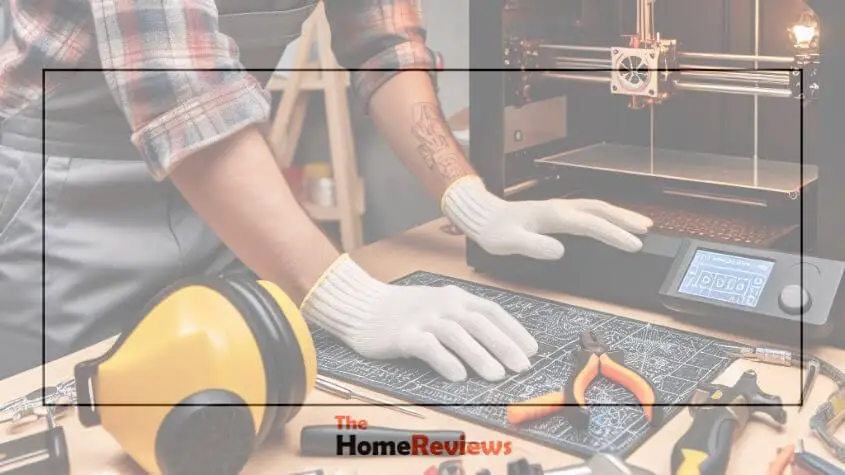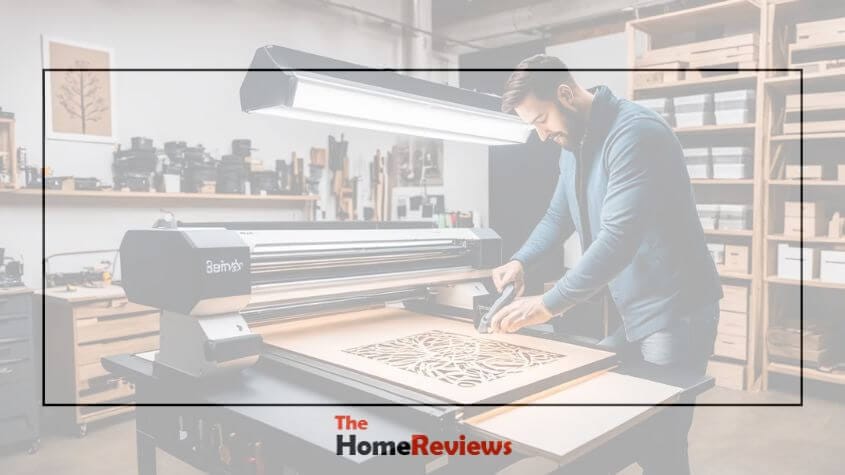If experiencing issues with your Glowforge, check the power source and ensure proper ventilation. Troubleshooting Glowforge problems can be straightforward with these initial steps.
Whether dealing with connectivity issues, calibration problems, or print quality concerns, understanding common troubleshooting techniques can help resolve them effectively. By following these steps and utilizing the resources provided by Glowforge, users can quickly troubleshoot issues and get back to their creative projects without unnecessary delays or frustration.
Remember to approach each problem systematically and stay patient while troubleshooting. With a clear understanding of basic troubleshooting methods, you can confidently tackle any issues that may arise with your Glowforge machine.

Common Glowforge Issues
Glowforge is a powerful and versatile laser cutter and engraving machine, but like any technology, it can experience issues. Understanding common Glowforge issues can help you troubleshoot and resolve problems efficiently, ensuring that you can continue creating with your machine hassle-free.
No Power
If your Glowforge is not receiving power, first check to ensure that it is properly plugged into a functioning power outlet. Inspect the power cord for any signs of damage. Additionally, make sure the power switch on the back of the machine is in the “on” position. If the issue persists, consider trying a different power outlet or using a different power cord to determine if the problem lies with the machine or the electrical connections.
Laser Not Cutting Properly
When the laser is not cutting or engraving as it should, start by cleaning the lens and the windows in the printer head. Examine the material you are attempting to cut to ensure it is suitable for use with your Glowforge. If the problem persists, recalibrate the machine according to the manufacturer’s instructions. It’s also essential to check the status of the materials; some materials produce more fumes and may not cut evenly if there is an obstruction to the airflow.
Wi-fi Connection Problems
If your Glowforge is experiencing Wi-Fi connection issues, start by checking the Wi-Fi network to ensure that it is functioning properly. Move the Glowforge closer to the Wi-Fi router to strengthen the signal, or consider using a Wi-Fi extender to improve connectivity. Restarting the Glowforge and the Wi-Fi router may also resolve connectivity issues. If the problem persists, ensure that your router is broadcasting a 2.4 GHz signal, as the Glowforge is only compatible with this frequency.

Troubleshooting Steps
Having issues with your Glowforge? Follow these troubleshooting steps to identify and fix any problems quickly.
Check the power connection.
Ensure the power cord is properly connected to the Glowforge and the power outlet.
Clean Optics And Lens
Use a soft cloth to clean the optics and lens to maintain optimal performance.
Reset Wi-fi Settings
Reset Wi-Fi settings to resolve connectivity issues and ensure seamless operation.
Advanced Troubleshooting
When it comes to addressing more complex issues, you may need to delve into advanced troubleshooting. Here are some steps for troubleshooting your Glowforge:
Inspect and replace the laser tube.
1. the machine and remove the laser tube cover.
2. Check for any visible damage to the laser tube.
3. If necessary, replace the laser tube with a new one.
Calibrate Belt Tension
a. Loosen belt tension by adjusting tension screws.
b. Use a tension tool to ensure proper belt tension.
c. the screws and test the machine’s performance.
Reset the machine to factory settings.
1. Turn off the machine and unplug it.
2. Press the power button and hold for 10 seconds.
3. Select the “Reset to Factory Settings” option.
4. Follow the on-screen prompts to complete the reset process.
Advanced troubleshooting steps can help resolve complex issues with your Glowforge machine.
Contacting Glowforge Support
Glowforge troubleshooting can be a simple process, but there are times when reaching out to Glowforge support is necessary. Here’s a guide on how to effectively contact them for assistance.
Customer Support Channels
When experiencing issues with your Glowforge, it’s important to know the available customer support channels to seek assistance. Glowforge offers several avenues for support, including:
- Live chat on their website
- Email support
- Community forum
- Phone support
Providing Essential Information
Before reaching out to Glowforge support, ensure that you have all the essential information ready to provide to the support team. This may include:
- serial number of your Glowforge
- detailed description of the issue
- Any error messages displayed
- Photos or videos of the problem
Preventing Future Issues
Glowforge troubleshooting can be a frustrating process, but taking preventative measures can save you time, money, and headaches in the long run. By following some simple best practices, you can minimize the chances of encountering issues with your Glowforge. In this post, we’ll discuss three key areas to focus on: regular maintenance, proper use of materials, and keeping the firmware updated.
Regular Maintenance
Maintaining your Glowforge machine is crucial for its optimal performance and longevity. By incorporating regular maintenance into your routine, you can prevent common issues from occurring. Here are some important steps to follow:
- Keep the lens and mirrors clean: Regularly inspect and clean the lens and mirrors to remove any dirt, debris, or residue that may accumulate. Use a soft cloth or lens cleaning wipes specifically designed for optical surfaces.
- Check the exhaust system: Ensure that the exhaust system is free from obstructions and that the exhaust hose is properly connected. A clogged or partially blocked exhaust system can result in poor airflow and overheating.
- Inspect the focus lens: Regularly inspect the focus lens for any signs of damage or wear. If necessary, replace the lens to prevent any issues with cutting or engraving precision.
Proper Use Of Materials
The materials you use in your Glowforge can have a significant impact on its performance. Using the wrong materials can lead to issues such as excessive smoke, harmful fumes, or damage to the machine. To prevent these problems, follow these guidelines:
- Use Glowforge-approved materials: Stick to the materials recommended by Glowforge to ensure compatibility and safety. Using unauthorized materials may void your warranty and cause damage to the machine.
- Avoid materials with protective coatings: Some materials, like acrylic, may come with protective coatings that can produce harmful fumes when laser-cut. Always remove any coatings or coverings before using them in your Glowforge.
- Ensure proper ventilation: Use your Glowforge in a well-ventilated area or consider using an external exhaust system for better air circulation. Adequate ventilation helps dissipate smoke and fumes, preventing buildup that can lead to issues.
Keeping The Firmware Updated
Glowforge regularly releases firmware updates that bring new features, bug fixes, and improvements to the machine. Keeping your firmware updated is essential for ensuring optimal performance and compatibility with the Glowforge software. Here’s how to stay up to date:
- Enable automatic updates: Enable automatic firmware updates in your Glowforge settings. This way, your machine will automatically download and install the latest updates whenever they are available.
- Check for updates regularly: If you prefer manual control, regularly check the Glowforge support website or the Glowforge community forums for any new firmware releases. Follow the instructions provided to manually update your firmware.
By following these preventative measures, you can minimize the chances of encountering issues with your Glowforge. Regular maintenance, proper use of materials, and staying up to date with firmware updates will ensure smooth operation and extend the lifespan of your machine.

Frequently Asked Questions
How Do I Clean the Lens of My Glowforge?
To clean the lens of your Glowforge, use a clean, lint-free cloth to gently wipe away any dust or debris. Be careful not to touch the lens directly with your fingers.
Why Is My Glowforge Not Cutting Through My Material?
If your Glowforge is not cutting through your material, make sure the material is properly placed and flat. Check the focal height settings and adjust if needed. Also, ensure that the lens is clean and not obstructed.
Why Is My Glowforge Printing Blurry Images?
If your Glowforge is printing blurry images, try cleaning the lens and ensuring that the material is properly focused. Check the image resolution and make sure it is set to high quality. If the problem persists, contact Glowforge support for further assistance.
How Do I Calibrate the Camera On My Glowforge?
To calibrate the camera on your Glowforge, follow the step-by-step instructions provided in the Glowforge app. Ensure that the material is properly placed and positioned within the camera’s view. If you face any issues, reach out to Glowforge support.
Why Is My Glowforge Making Unusual Noises?
Unusual noises from your Glowforge can indicate issues with the motor or belts. Check if any foreign objects are obstructing the movement of the laser head. If the noise continues, contact Glowforge support for troubleshooting assistance.
Conclusion
In troubleshooting your Glowforge, remember to check for common issues first. Proper maintenance can prevent future problems. Take advantage of the Glowforge community for assistance and share your experiences. By understanding the machine, you can tackle any issues confidently. Glowforge troubleshooting isn’t always easy, but with patience and knowledge, you can overcome any obstacle.




